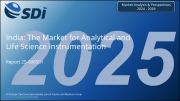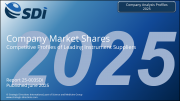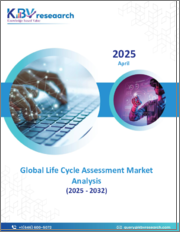
|
시장보고서
상품코드
1649450
세계의 수명주기 평가(LCA) 소프트웨어 시장 : 예측(2025-2030년)Life Cycle Assessment (LCA) Software Market - Forecasts from 2025 to 2030 |
||||||
수명주기 평가(LCA) 소프트웨어 시장은 예측 기간 동안 12.65%의 연평균 복합 성장률(CAGR)로 성장할 전망이며, 2025년 5억 6,555만 1,000달러에서 2030년에는 10억 2,575만 달러로 증가할 것으로 예측됩니다.
수명주기 평가(LCA)는 제품의 수명 주기 전반에 걸쳐 환경에 미치는 영향을 평가하는 프로세스입니다. 이 소프트웨어 솔루션은 제품의 환경 영향을 평가하고 효율적이고 지속 가능한 제품 설계를 지원합니다. 세계 건설 부문의 생산량 증가는 예측 기간 동안 LCA 소프트웨어 수요를 촉진할 것으로 예상됩니다. LCA 소프트웨어는 건축물의 효율적인 인프라 설계를 촉진하고, 환경에 미치는 영향을 최소화하며, 영향이 적은 곳을 선택하는 데 도움을 줍니다. 건설 부문은 주요 경제권에서 대폭적인 성장을 이루고 있으며, 예를 들어 영국의 국가 통계국은 2023년 신규 사업 건설 생산액이 4.2% 증가하여 1,390억 2,900만 파운드에 달했다고 보고하고 있습니다.
수명주기 평가(LCA) 소프트웨어 시장 성장 촉진요인 :
- 식품 및 식품에 대한 수요 증가 : 세계의 식품 및 식품에 대한 수요 증가는 LCA 소프트웨어 시장의 성장을 가속하는 중요한 요소입니다. 이 분야에서 LCA 소프트웨어는 보다 지속가능하고 환경친화적인 원재료 조달 프로세스를 보장하는 동시에 생산 폐기물의 최소화를 지원합니다.
- 건설 분야에서의 생산 증가 : 특히 개발도상국에서의 건설 분야의 확대는 예측 기간 동안 LCA 소프트웨어 수요를 더욱 높일 것으로 예상됩니다.
- 포장 식품 및 식음료에 대한 수요 증가 : 포장 식품 및 식음료에 대한 세계의 욕구가 증가함에 따라 이 업계에서 지속가능성의 실천을 평가하고 개선하기 위한 효과적인 LCA 솔루션의 필요성을 촉진하고 있습니다.
지리적 동향에서 수명주기 평가 소프트웨어 시장은 북미, 남미, 유럽, 중동 및 아프리카, 아시아태평양으로 구분됩니다. 아시아태평양은 중국, 일본, 인도, 한국 등 주요 경제국이 지배적이며 ASEAN 국가의 신흥 시장도 성장에 기여하고 있습니다.
수명주기 평가(LCA) 소프트웨어 시장의 지리적 전망 :
- 북미의 현저한 성장 : 북미는 LCA 소프트웨어 시장에서 큰 점유율을 차지할 것으로 예상됩니다. 미국에서는 공업생산이 성장하고 있으며 에너지 배분을 최적화하는 공업기준을 적용하면서 기술 혁신에 많은 투자를 하고 있습니다. 탄소 배출에 대한 우려 증가는 지속 가능한 관행으로의 전환을 가속화하고 상업 및 산업 운영에서 채용 수준을 높이기 위한 노력을 촉구하고 있습니다.
LCA 소프트웨어는 미국 기업이 지속가능성 목표를 모니터링하고 환경에 미치는 영향에 대한 책임을 지게 하는 틀을 수립했습니다. 규제 당국은 탄소 중립의 달성을 목표로 하는 이니셔티브를 우선합니다. 예를 들어, 바이덴 정부가 내세운 '연방 지속가능계획'은 2050년까지 탄소 배출량을 순 0으로 만드는 것을 목표로 합니다. 게다가 캘리포니아와 같은 국가는 온실가스 배출을 최소화하면서 비주택 건축물에 환경친화적인 틀을 만드는 것을 목적으로 하는 '캘리포니아 그린빌딩 표준 코드'와 같은 규제를 도입하고 있습니다. 종합하면 수명주기 평가 소프트웨어 시장은 식음료 제조, 건설, 지속가능성에 대한 규제 당국의 지원 등 다양한 분야에서 수요 증가를 원동력으로 크게 성장할 전망입니다. 시장의 확대는 기술 발전과 업계 전반의 환경 책임에 대한 관심 증가에 의해 지원될 것으로 보입니다.
이 보고서를 구입하는 이유
- 인사이트 있는 분석 : 고객 부문, 정부 정책 및 사회 경제 요인, 소비자 선호도, 산업별 및 기타 하위 부문에 초점을 맞추어 주요 및 신흥 지역을 다루는 상세한 시장 고려 사항을 얻을 수 있습니다.
- 경쟁 구도 : 세계 주요 기업이 채택한 전략적 전략을 이해하고 적절한 전략으로 시장 침투 가능성을 이해할 수 있습니다.
- 시장 동향 및 촉진요인 : 동적 요인과 매우 중요한 시장 동향, 그리고 그들이 향후 시장 전개를 어떻게 형성해 나가는지를 탐구합니다.
- 실행 가능한 제안 : 역동적인 환경에서 새로운 비즈니스 스트림과 수익을 발굴하기 위한 전략적 결정을 내리기 위해 인사이트를 활용합니다.
- 폭넓은 이용자에 대응 : 신흥기업, 연구기관, 컨설턴트, 중소기업, 대기업에 유익하고 비용 효율적입니다.
어떤 용도로 사용됩니까?
업계 및 시장 인사이트, 사업 기회 평가, 제품 수요 예측, 시장 진출 전략, 지리적 확대, 설비 투자 결정, 규제 프레임워크 및 영향, 신제품 개척, 경쟁의 영향
조사 범위
- 과거 데이터 및 예측(2022-2030년)
- 성장 기회, 과제, 공급망 전망, 규제 체제, 고객 행동 및 추세 분석
- 경쟁 포지셔닝, 전략 및 시장 점유율 분석
- 수익 성장과 예측 각국을 포함한 부문 및 지역의 평가
- 기업 프로파일링(특히 주요 개발)
수명주기 평가(LCA) 소프트웨어 시장은 다음과 같이 세분화됩니다.
전개별
- 온프레미스
- 클라우드
기업 유형별
- 소규모
- 중규모
- 대규모
용도별
- 음식
- 소비재
- 패키지
- 건설
- 기타
지역별
- 북미
- 미국
- 캐나다
- 멕시코
- 남미
- 브라질
- 아르헨티나
- 기타
- 유럽
- 영국
- 독일
- 프랑스
- 스페인
- 기타
- 중동 및 아프리카
- 사우디아라비아
- UAE
- 기타
- 아시아태평양
- 중국
- 인도
- 일본
- 한국
- 대만
- 싱가포르
- 인도네시아
- 기타
목차
제1장 서론
- 시장 개요
- 시장의 정의
- 조사 범위
- 시장 세분화
- 통화
- 전제조건
- 기준연도 및 예측연도의 타임라인
- 이해 관계자의 주요 이점
제2장 조사 방법
- 조사 디자인
- 조사 과정
- 데이터 검증
제3장 주요 요약
- 주요 조사 결과
- 애널리스트 보기
제4장 시장 역학
- 시장 성장 촉진요인
- 시장 성장 억제요인
- Porter's Five Forces 분석
- 업계 밸류체인 분석
제5장 수명주기 평가(LCA) 소프트웨어 시장 : 전개별
- 서문
- 온프레미스
- 클라우드
제6장 수명주기 평가(LCA) 소프트웨어 시장 : 기업 유형별
- 서문
- 소규모
- 중규모
- 대규모
제7장 수명주기 평가(LCA) 소프트웨어 시장 : 용도별
- 서문
- 음식
- 소비재
- 패키지
- 공사
- 기타
제8장 수명주기 평가(LCA) 소프트웨어 시장 : 지역별
- 세계 개요
- 북미
- 전개별
- 기업 유형별
- 용도별
- 국가별
- 남미
- 전개별
- 기업 유형별
- 용도별
- 국가별
- 유럽
- 전개별
- 기업 유형별
- 용도별
- 국가별
- 중동 및 아프리카
- 전개별
- 기업 유형별
- 용도별
- 국가별
- 아시아태평양
- 전개별
- 기업 유형별
- 용도별
- 국가별
제9장 경쟁 환경 및 분석
- 주요 기업 및 전략 분석
- 신흥 기업 및 시장 수익성
- 합병, 인수, 합의 및 협업
- 경쟁 대시보드
제10장 기업 프로파일
- PRe Sustainability BV
- iPoint-systems GmBh
- One Click LCA Ltd.
- EarthShift Global
- GreenDelta
- Circular Ecology
- Athena Sustainable Materials Institute
- Solid Forest
- Sphera
- Altermaker
- Minviro Ltd
- P6 Technologies
- SCS Global Sevices
- Intertek Group plc
- SolidWorks Sustainability
The life cycle assessment (LCA) software market is projected to grow at a CAGR of 12.65% over the forecast period, increasing from US$565.551 million in 2025 to US$1,025.750 million by 2030.
Life Cycle Assessment (LCA) is a process that evaluates the environmental impact of a product throughout its entire life cycle. This software solution helps assess the environmental effects of products and supports efficient and sustainable product design. The increasing output in the global construction sector is expected to drive demand for LCA software during the forecast period. LCA software facilitates efficient infrastructure design for buildings, helping to minimize their environmental impact and aiding in the selection of low-impact sites. The construction sector has seen substantial growth in major economies; for example, the Office of National Statistics in the UK reported a 4.2% increase in new-work construction output in 2023, reaching GBP 139,029 million.
Drivers of the Life Cycle Assessment Software Market:
- Growing Demand for Food and Beverage Products: The rising global demand for food and beverage products is a key factor propelling the growth of the LCA software market. In this sector, LCA software ensures a more sustainable and environmentally friendly procurement process for raw materials while helping to minimize production waste.
- Increasing Production in the Construction Sector: The expanding construction sector, particularly in developing countries, is expected to further boost demand for LCA software during the forecast period.
- Rising Demand for Packaged Foods and Beverages: The growing global appetite for packaged food and beverages is driving the need for effective LCA solutions to assess and improve sustainability practices within this industry.
In terms of geographical trends, the Life Cycle Assessment software market is segmented into North America, South America, Europe, the Middle East and Africa, and Asia Pacific. The Asia Pacific region is dominated by major economies such as China, Japan, India, and South Korea, with several emerging markets within ASEAN countries also contributing to growth.
Geographical Outlook of the Life Cycle Assessment Software Market:
- Significant Growth in North America: North America is expected to hold a substantial share of the LCA software market. The United States is experiencing growth in industrial production and is investing heavily in technological innovations while applying industrial standards that optimize energy distribution. Growing concerns about carbon emissions have accelerated the transition toward sustainable practices, prompting efforts to enhance adoption levels in commercial and industrial operations.
LCA software has established a framework that enables companies in the U.S. to monitor their sustainability goals and take responsibility for their environmental impact. Regulatory authorities are prioritizing initiatives aimed at achieving carbon neutrality, such as the "Federal Sustainable Plan" launched by the Biden Administration, which targets net-zero carbon emissions by 2050. This plan includes commitments to power buildings with carbon-free electricity.Additionally, states like California are implementing regulations such as the "California Green Building Standard Code," which aims to create an eco-friendly framework for non-residential structures while minimizing greenhouse gas emissions.In summary, the Life Cycle Assessment software market is poised for significant growth driven by increasing demand across various sectors including food and beverage production, construction, and regulatory support for sustainability initiatives. The market's expansion will be supported by advancements in technology and an increasing focus on environmental accountability across industries.
Reasons for buying this report:-
- Insightful Analysis: Gain detailed market insights covering major as well as emerging geographical regions, focusing on customer segments, government policies and socio-economic factors, consumer preferences, industry verticals, other sub- segments.
- Competitive Landscape: Understand the strategic maneuvers employed by key players globally to understand possible market penetration with the correct strategy.
- Market Drivers & Future Trends: Explore the dynamic factors and pivotal market trends and how they will shape up future market developments.
- Actionable Recommendations: Utilize the insights to exercise strategic decision to uncover new business streams and revenues in a dynamic environment.
- Caters to a Wide Audience: Beneficial and cost-effective for startups, research institutions, consultants, SMEs, and large enterprises.
What do businesses use our reports for?
Industry and Market Insights, Opportunity Assessment, Product Demand Forecasting, Market Entry Strategy, Geographical Expansion, Capital Investment Decisions, Regulatory Framework & Implications, New Product Development, Competitive Intelligence
Report Coverage:
- Historical data & forecasts from 2022 to 2030
- Growth Opportunities, Challenges, Supply Chain Outlook, Regulatory Framework, Customer Behaviour, and Trend Analysis
- Competitive Positioning, Strategies, and Market Share Analysis
- Revenue Growth and Forecast Assessment of segments and regions including countries
- Company Profiling (Strategies, Products, Financial Information, and Key Developments among others)
The Lifecycle Assessment Software Market has been segmented as following:
By Deployment
- On-premises
- Cloud
By Enterprise Type
- Small
- Medium
- Large
By Application
- Food and Beverages
- Consumer Goods
- Packaging
- Construction
- Others
By Geography
- North America
- USA
- Canada
- Mexico
- South America
- Brazil
- Argentina
- Others
- Europe
- United Kingdom
- Germany
- France
- Spain
- Others
- Middle East and Africa
- Saudi Arabia
- UAE
- Others
- Asia Pacific
- China
- India
- Japan
- South Korea
- Taiwan
- Singapore
- Indonesia
- Others
TABLE OF CONTENTS
1. INTRODUCTION
- 1.1. Market Overview
- 1.2. Market Definition
- 1.3. Scope of the Study
- 1.4. Market Segmentation
- 1.5. Currency
- 1.6. Assumptions
- 1.7. Base and Forecast Years Timeline
- 1.8. Key benefits for the stakeholders
2. RESEARCH METHODOLOGY
- 2.1. Research Design
- 2.2. Research Process
- 2.3. Data Validation
3. EXECUTIVE SUMMARY
- 3.1. Key Findings
- 3.2. Analyst View
4. MARKET DYNAMICS
- 4.1. Market Drivers
- 4.2. Market Restraints
- 4.3. Porter's Five Forces Analysis
- 4.3.1. Bargaining Power of Supplier
- 4.3.2. Bargaining Power of Buyers
- 4.3.3. Threat of New Entrants
- 4.3.4. Threat of Substitutes
- 4.3.5. Competitive Rivalry in the Industry
- 4.4. Industry Value Chain Analysis
5. LIFE CYCLE ASSESSMENT (LCA) SOFTWARE MARKET BY DEPLOYMENT
- 5.1. Introduction
- 5.2. On-premises
- 5.3. Cloud
6. LIFE CYCLE ASSESSMENT (LCA) SOFTWARE MARKET BY ENTERPRISE TYPE
- 6.1. Introduction
- 6.2. Small
- 6.3. Medium
- 6.4. Large
7. LIFE CYCLE ASSESSMENT (LCA) SOFTWARE MARKET BY APPLICATION
- 7.1. Introduction
- 7.2. Food and Beverages
- 7.3. Consumer Goods
- 7.4. Packaging
- 7.5. Construction
- 7.6. Others
8. LIFE CYCLE ASSESSMENT (LCA) SOFTWARE MARKET BY GEOGRAPHY
- 8.1. Global Overview
- 8.2. North America
- 8.2.1. By Deployment
- 8.2.2. By Enterprise Type
- 8.2.3. By Application
- 8.2.4. By Country
- 8.2.4.1. United States
- 8.2.4.2. Canada
- 8.2.4.3. Mexico
- 8.3. South America
- 8.3.1. By Deployment
- 8.3.2. By Enterprise Type
- 8.3.3. By Application
- 8.3.4. By Country
- 8.3.4.1. Brazil
- 8.3.4.2. Argentina
- 8.3.4.3. Others
- 8.4. Europe
- 8.4.1. By Deployment
- 8.4.2. By Enterprise Type
- 8.4.3. By Application
- 8.4.4. By Country
- 8.4.4.1. United Kingdom
- 8.4.4.2. Germany
- 8.4.4.3. France
- 8.4.4.4. Spain
- 8.4.4.5. Others
- 8.5. Middle East and Africa
- 8.5.1. By Deployment
- 8.5.2. By Enterprise Type
- 8.5.3. By Application
- 8.5.4. By Country
- 8.5.4.1. Saudi Arabia
- 8.5.4.2. United Arab Emirates
- 8.5.4.3. Others
- 8.6. Asia-Pacific
- 8.6.1. By Deployment
- 8.6.2. By Enterprise Type
- 8.6.3. By Application
- 8.6.4. By Country
- 8.6.4.1. China
- 8.6.4.2. Japan
- 8.6.4.3. India
- 8.6.4.4. South Korea
- 8.6.4.5. Taiwan
- 8.6.4.6. Singapore
- 8.6.4.7. Indonesia
- 8.6.4.8. Others
9. COMPETITIVE ENVIRONMENT AND ANALYSIS
- 9.1. Major Players and Strategy Analysis
- 9.2. Emerging Players and Market Lucrativeness
- 9.3. Mergers, Acquisitions, Agreements, and Collaborations
- 9.4. Competitive Dashboard
10. COMPANY PROFILES
- 10.1. PRe Sustainability B.V.
- 10.2. iPoint-systems GmBh
- 10.3. One Click LCA Ltd.
- 10.4. EarthShift Global
- 10.5. GreenDelta
- 10.6. Circular Ecology
- 10.7. Athena Sustainable Materials Institute
- 10.8. Solid Forest
- 10.9. Sphera
- 10.10. Altermaker
- 10.11. Minviro Ltd
- 10.12. P6 Technologies
- 10.13. SCS Global Sevices
- 10.14. Intertek Group plc
- 10.15. SolidWorks Sustainability



















